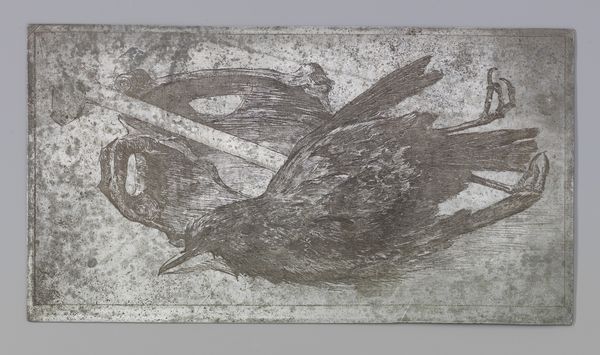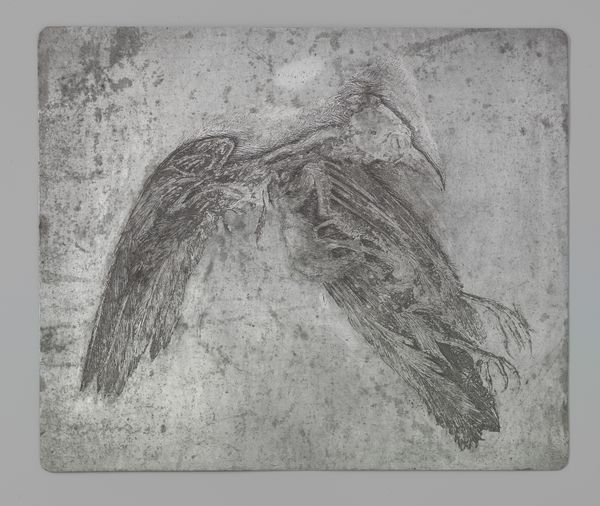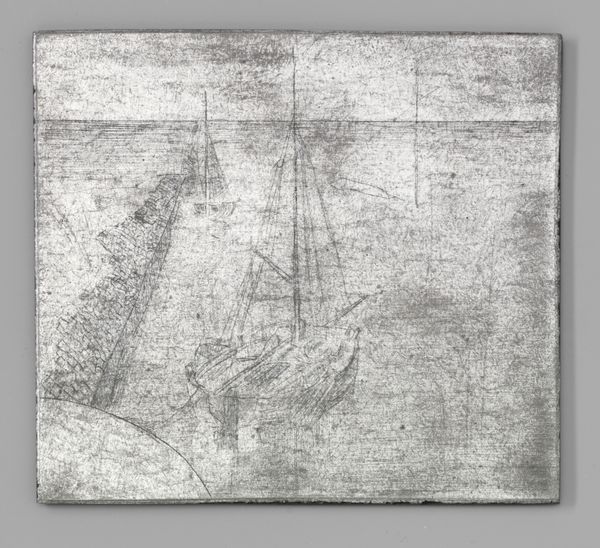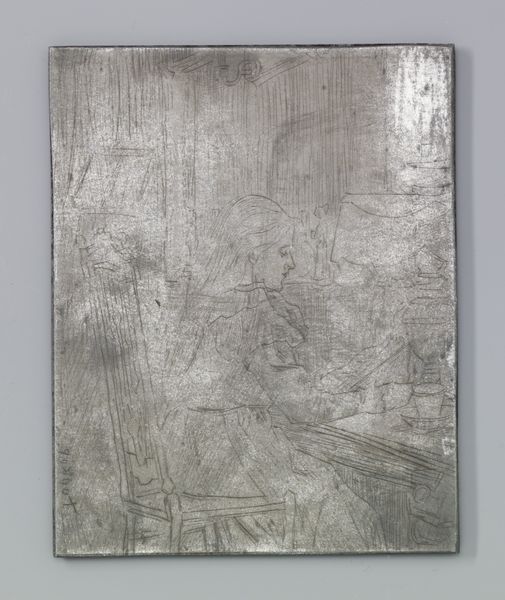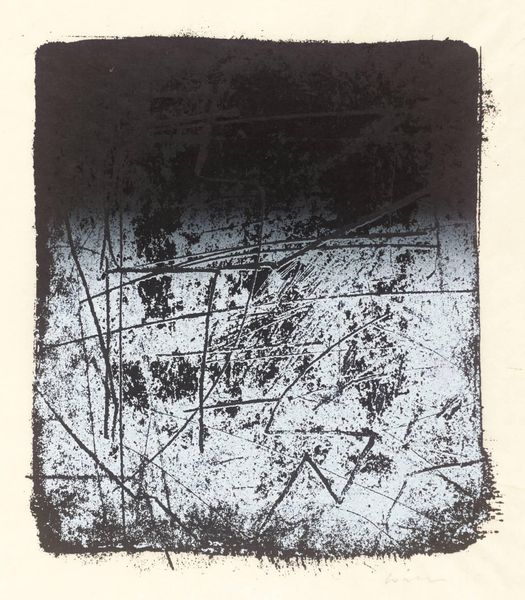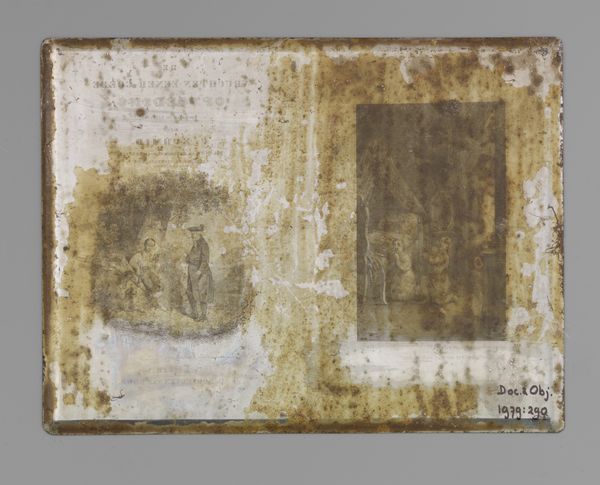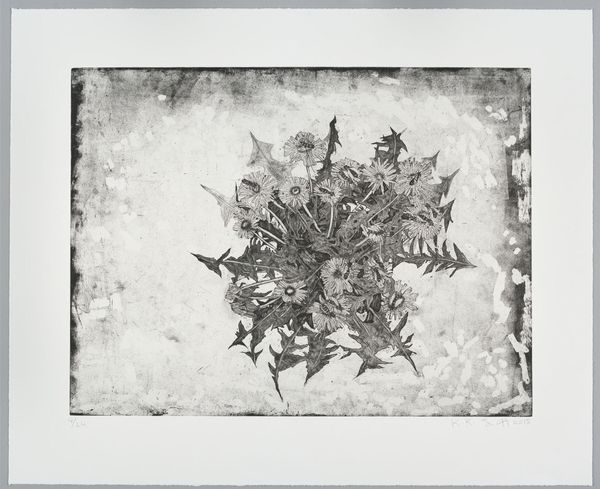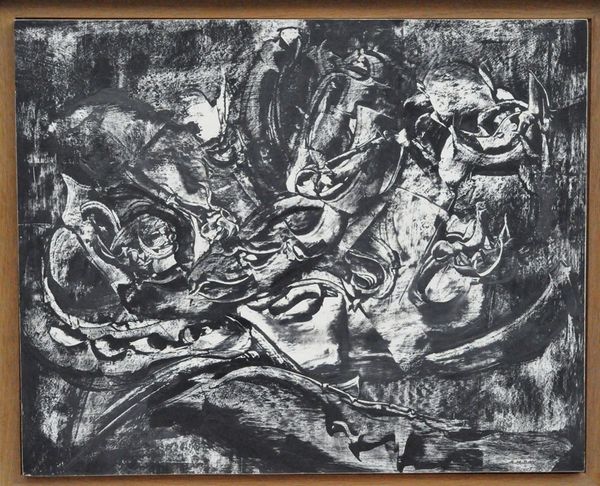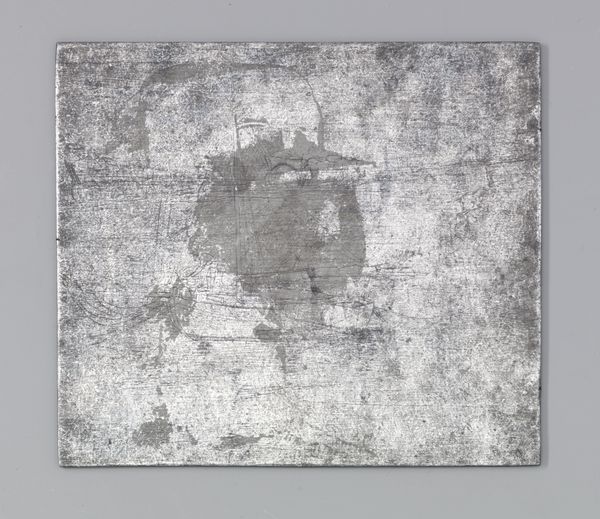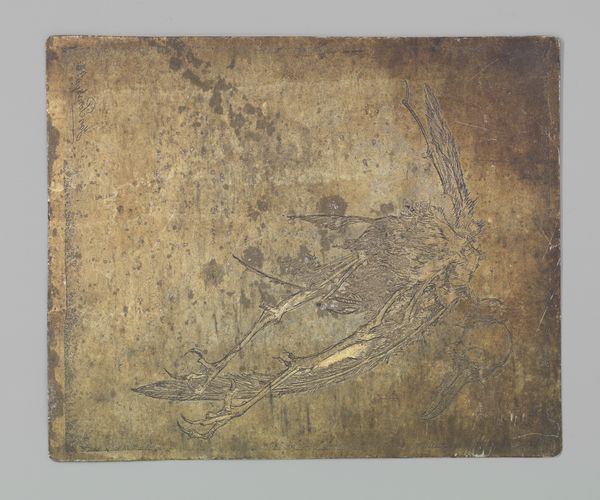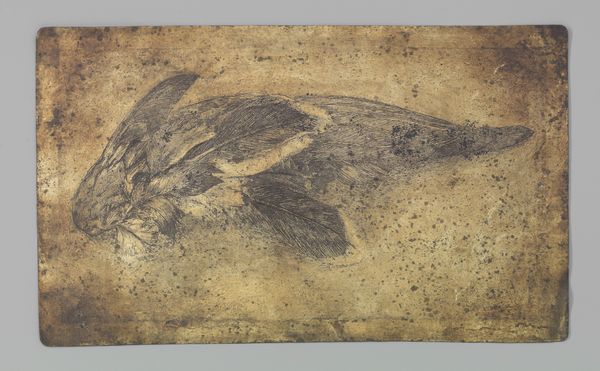
print, etching, dry-media
# print
#
etching
#
figuration
#
dry-media
#
momento-mori
Dimensions: height 250 mm, width 280 mm
Copyright: Rijks Museum: Open Domain
Editor: Here we have Jan Petrus Ponstijn’s "Dead Bird with Skull," a print made with etching techniques, dating from 1940-1948. It’s incredibly stark, the skeletal bird a powerful image of mortality. What strikes you most about this piece? Curator: I see a potent symbol of vulnerability, particularly resonant when considering the period in which it was created. The imagery clearly evokes 'memento mori,' but what does it mean to depict this in a time already saturated with death and uncertainty? It’s almost as if Ponstijn is asking us to confront the brutal reality of existence stripped bare. Editor: So, beyond the vanitas theme, you see a specific commentary related to its historical context? Curator: Absolutely. Think about the pervasive sense of loss and trauma following the war. Ponstijn, through this delicate yet brutal etching, uses the bird as a symbol of lost innocence and broken potential, something fragile destroyed. Consider too how this might mirror the position of the Netherlands under Nazi occupation at the time. Do you think the rough, almost violent etching style enhances that reading? Editor: Definitely, the harsh lines and textures really emphasize the violence done to the bird, reflecting maybe a violence done to society as a whole. Curator: Exactly. And consider the socio-political dynamics that informed Ponstijn’s artistic vision, shaped by his experience as a Dutch artist working during a time of tremendous upheaval and oppression. The artwork therefore becomes more than just a memento mori; it’s a sociopolitical statement, using death to confront systems of power and social breakdown. Editor: That gives me a lot to think about. I was initially struck by its simplicity, but now I see how the layers of meaning reflect complex social and political realities. Curator: And it shows how understanding the historical context is absolutely key to appreciating the power of art as activism.
Comments
No comments
Be the first to comment and join the conversation on the ultimate creative platform.
